- Connected to suicide intentions (World Health Organization, 2017).
- Connected to non-lethal self-harm (WHO, 2017).
- Affects general psychological well-being (WHO, 2017).
Adolescent mental health constitutes a considerable public health issue recognized, among other things, as one of the 2020 Topics and Objectives on the Healthy People. Its importance is undeniable: according to the World Health Organization, it connects directly to suicide intentions as well as non-lethal self-harm. Apart from these, it also correlates to bullying, substance, abuse, and other issues faced by the youth on a regular basis. As a result, the general level of psychological well-being among adolescents is inseparable from the mental health issues encountered by this population group, and this problem needs to be addressed both promptly and effectively.
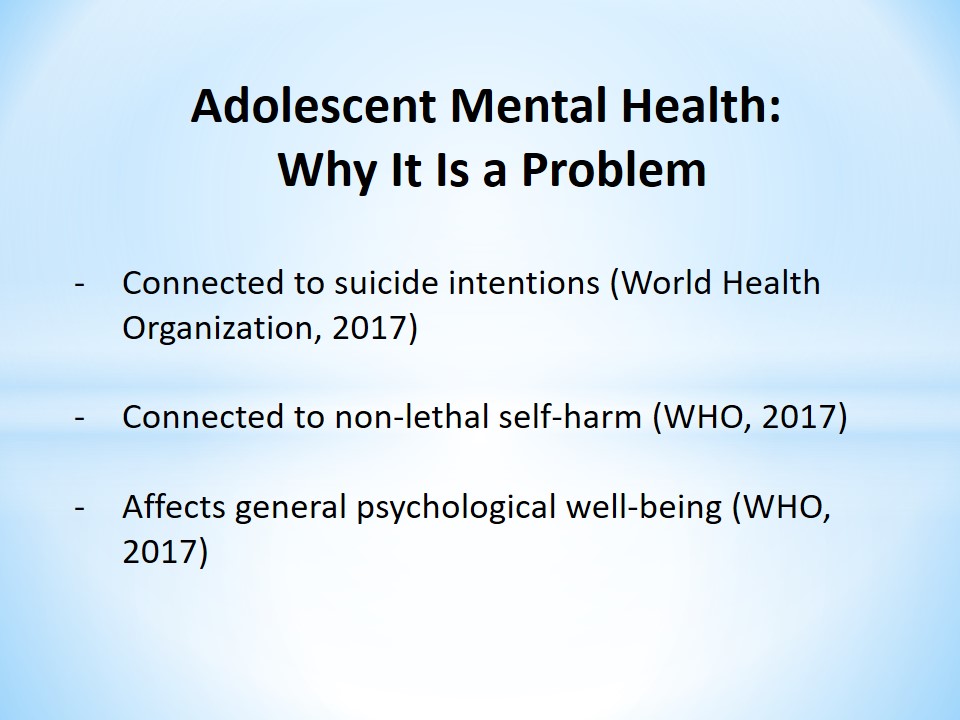
Focus Population: Why Adolescents
In the 2010s, developed countries face:
- Sharp increase in adolescent mental conditions (Gunnell et al., 2018).
- Sharp increase in adolescent self-harm (Gunnell et al., 2018).
While all population groups face mental health problems of their own, there are grounds to focus on adolescents specifically. To begin with, the World Health Organization stresses that adolescent mental health is often overlooked among other health risks faced by the youth worldwide. Apart from that, there are issues specific to developed countries. Throughout the 2010s, the first-world countries have witnessed a sharp increase in the number of mental conditions reported by adolescents. Apart from that, the cases of non-lethal self-harm, which are indicative of mental health issues, have become more frequent as well. Considering these developments, adolescent mental health deserves thorough attention of scholars and practitioners alike.
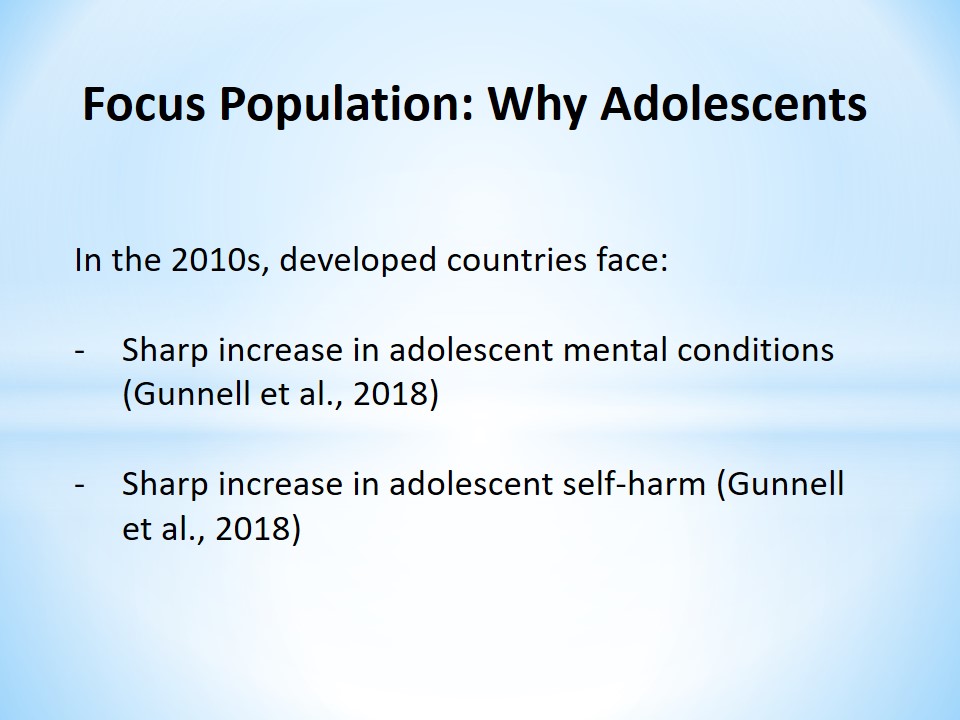
Racial Disparities
Black and Hispanic adolescents face:
- Higher degrees of polyvictimization (López et al., 2016).
- Slightly higher degrees of PTSD (López et al., 2016).
The negative effects of mental health issues among adolescents are not distributed evenly – on the contrary, there are notable disparities easily established with the use of several criteria. Race and ethnicity occupy a prominent place among these and account for the uneven distribution of mental health conditions among adolescents to a great degree. For instance, Black and Hispanic adolescents face much higher degrees of polyvictimization – that is, having experienced multiple victimizations – than their White counterparts. This tendency manifest in higher rates of several mental disorders – for example, research confirms that Black and Hispanic youths experience PTSD more often than the Whites.
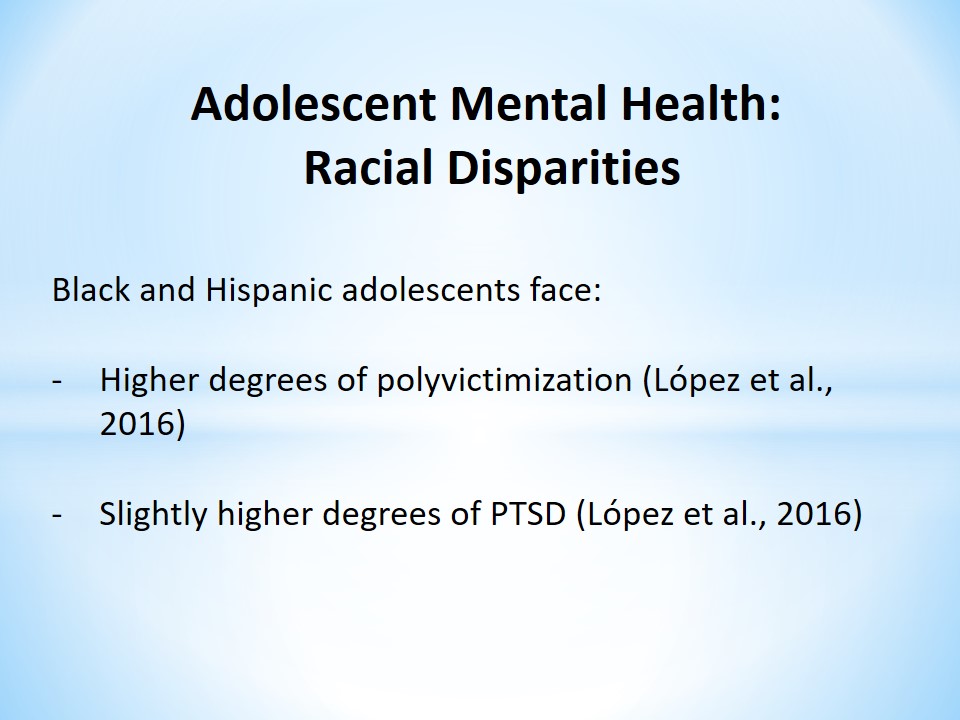
Disparities by Gender and Sexuality
Sexual minority adolescents demonstrate:
- Significantly higher risks of suicide (Raifman et al., 2020).
- Slightly higher risks of anxiety (Durwood et al., 2017).
Race and ethnicity are not the only criteria that account for disparities in the distribution of mental health problems among adolescents. Gender and sexual orientation also play a notable role, although it is slightly less significant as that of ethnicity and race. There is evidence that sexual minority adolescents face notably higher risks of suicide. The risks of anxiety are also higher in this group, if only marginally so. The same applies to transgender adolescents whose gender identity does not correspond to their biological sex. Thus, the disparities by gender and sexuality are slightly less pronounced than those by ethnicity and race but are still notable and significant.
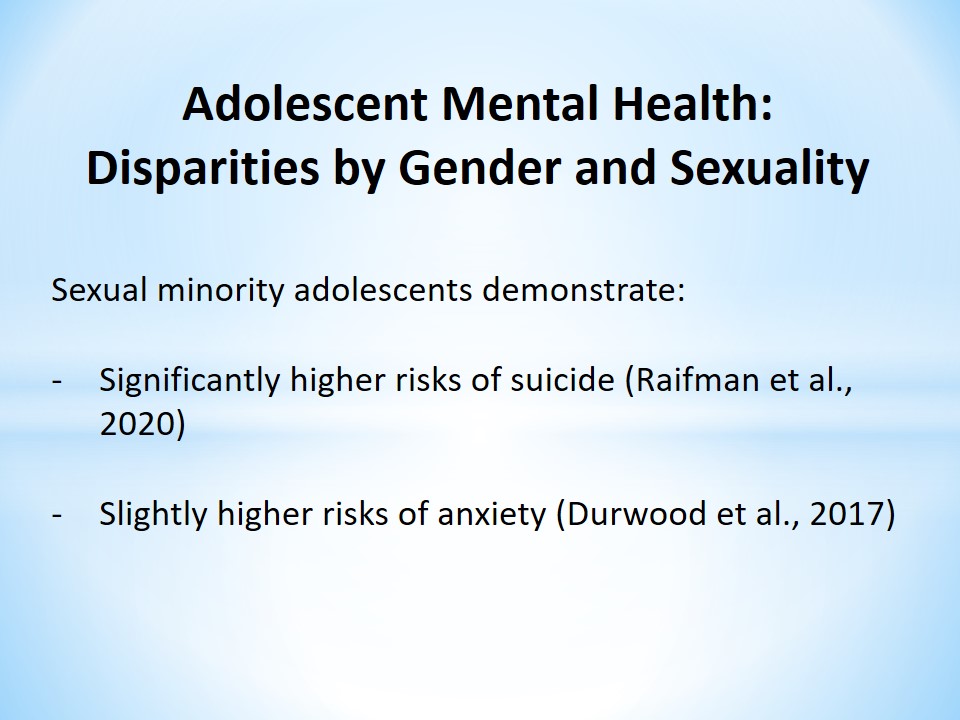
WHO and Adolescent Mental Health
Global Accelerated Action for the Health of Adolescents initiative offers:
- National programming frameworks for adolescent mental health (World Health Organization, 2017).
- Evidence-based approaches to adolescent mental health (World Health Organization, 2017).
The importance of adolescent mental health problems is further illustrated by the fact that the World Health Organization focuses on this topic. In its Global Accelerated Action for the Health of Adolescents initiative, the WHO recognizes mental health issues as an essential yet often overlooked part of overall health risks faced by the youth and urges to address them. In order to further this vision, the WHO develops and introduces national programming frameworks for adolescent mental health designed to suit different countries and conditions. Additionally, it outlines a broad range of evidence-based approaches applicable to addressing adolescent mental health.
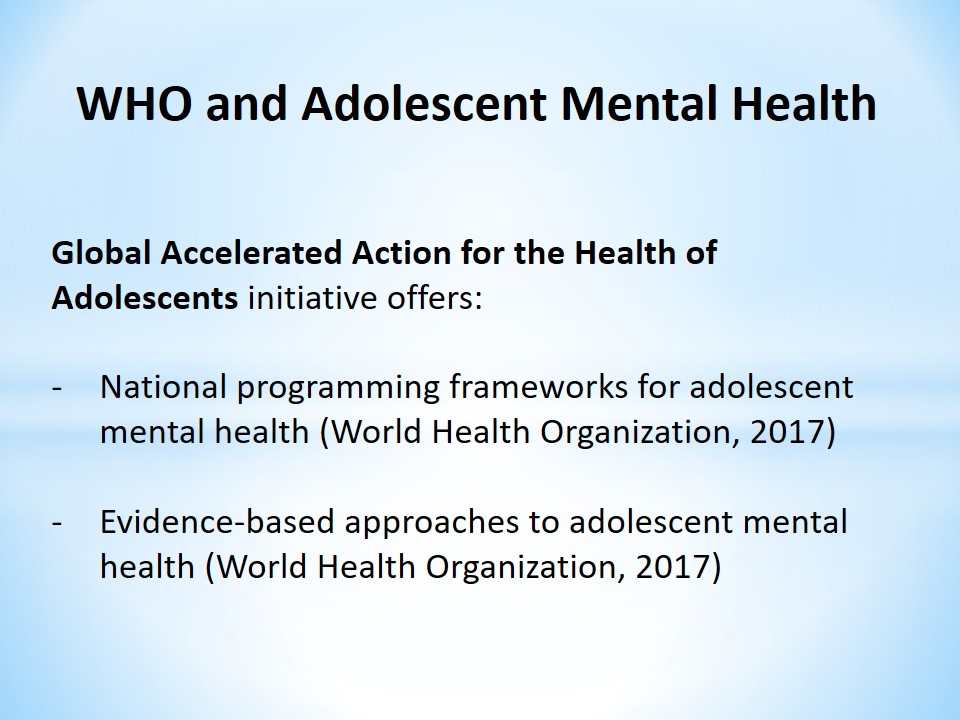
Evidenced-Based Approaches
- Intervention research knowledge management (Rith-Najarian et al., 2016).
- Collaborative design (Rith-Najarian et al., 2016).
- Developmentally sensitive training and supervision (Rith-Najarian et al., 2016).
There are several evidence-based approaches suited to adolescent mental health issues. One example is the intervention research knowledge management. Its importance lies in the fact that the body of knowledge and the number of possible solutions regarding adolescent mental health increase constantly, and intervention research knowledge management helps to standardize information for the practitioners’ benefit. Collaborative design is another evidence-based approach that focuses on bringing the right individuals together to address a particular case and design the most effective intervention under given conditions. Finally, there is also developmentally sensitive training and supervision that is designed to help health professionals in identifying and addressing mental health issues among adolescents as they emerge.
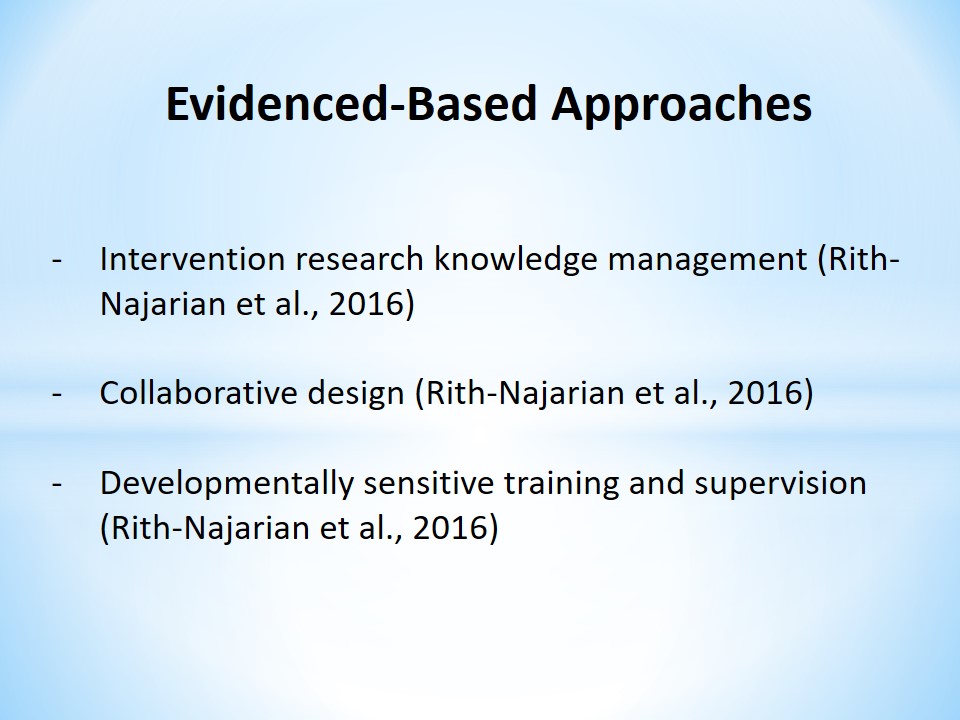
Evidenced-Based Approaches in Practice
Intervention Research Knowledge Management → Distillation and Matching Model (DMM).
Collaborative design → Interdisciplinary teams.
Developmentally sensitive training and supervision → Modular training.
Each of the three evidence-based approaches listed above has its own implications for practice. Intervention research knowledge management manifests in producing Distillation and Matching Models or DMMs. Unlike traditional knowledge synthesis approaches, such as literature reviews or meta-analysis, DMMs have a specific focus on identifying practice elements and establishing their frequency in successful programs. Collaborative design logically leads to establishing interdisciplinary teams of health professionals uniting their varied qualifications for achieving a common goal. As for the developmentally sensitive training and supervision, its practical application is modular training, as opposed to unidirectional and standardized programs. The modular structure of training would allow producing health professionals with a more diverse set of skills for addressing adolescent mental health problems.
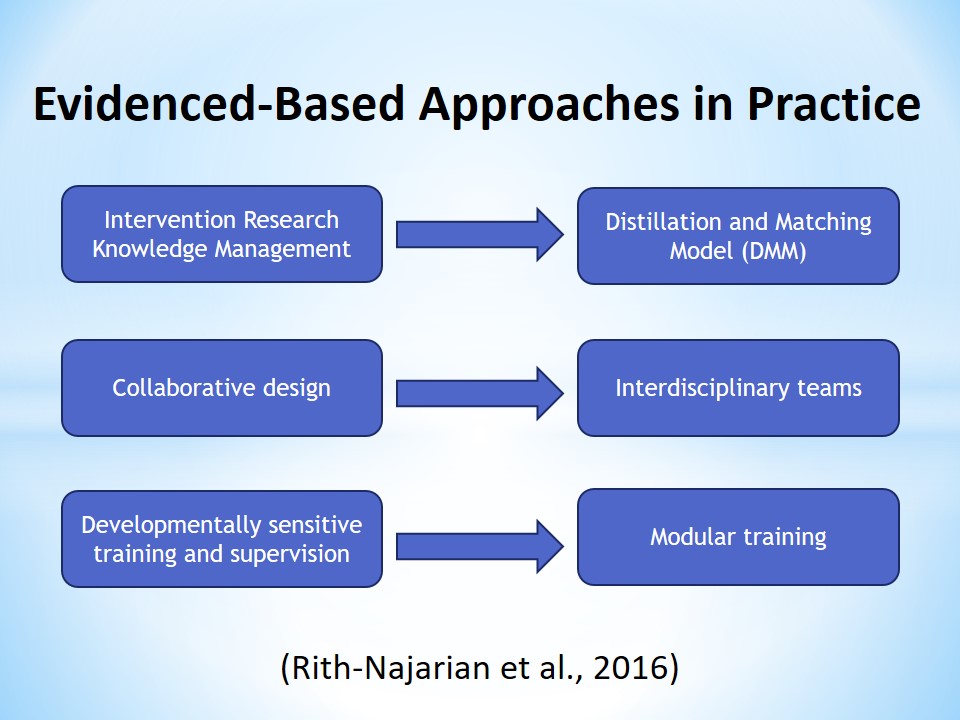
Effects on Racial Disparities In Adolescent Mental Health
- Better analysis of adolescent mental health with regards to race and ethnicity (Rith-Najarian et al., 2016).
- Health professionals better equipped to address existing disparities (Rith-Najarian et al., 2016).
At least two of the evidence-based approaches listed above and their practical applications have direct importance for addressing racial disparities in adolescent mental health. Intervention research knowledge management and the DMMs it produces represent information in a highly standardized form. As a result, it helps to identify intervention better suited to address mental health issues among different groups of adolescents, including those distinguished by racial criteria. As for the developmentally sensitive training and supervision, modular training would result in more flexible training procedures. It would allow trainees to stress different practice elements, including those that promote understanding and addressing racial disparities in adolescent mental health.
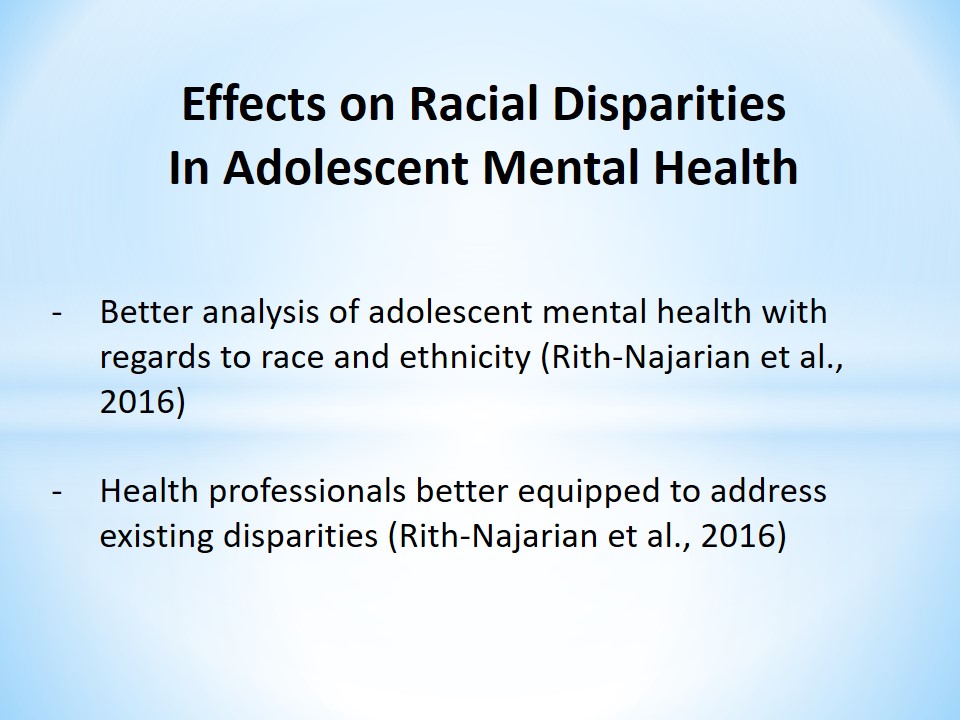
Effects on Disparities by Gender and Sexuality In Adolescent Mental Health
- Better analysis of adolescent mental health with regards to gender and sexuality (Rith-Najarian et al., 2016).
- Health professionals better equipped to address existing disparities (Rith-Najarian et al., 2016).
The application of the evidence-based approaches to disparities by gender in sexuality is quite similar to their importance for addressing racial disparities. This similarity, however, is merely evidence of the universal applicability of said approaches to a broad set of disparities that exist within the topic. As in the latter case, the proper use of DMMs would allow identifying practice elements and interventions that are more and less effective in addressing different groups of youth. This knowledge would be a necessary first step to mitigating sexuality and gender disparities in adolescent mental health. Modular training would allow an emphasis on implementing this knowledge for the trainees most interested in the subject.
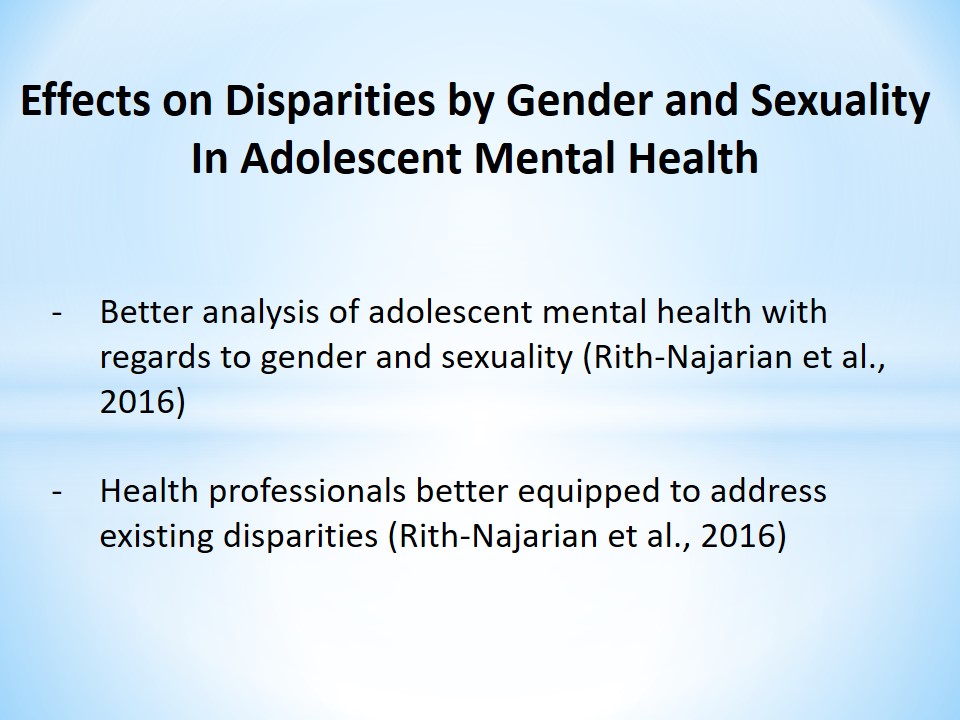
Education Proposal: Mental Health Trainee Facilitation of Sibling Support Groups
- Participants: mental health trainees in psychiatry, psychology, and social work.
- Essence: participants receive training as facilitators of sibling support groups in family-centered care.
- Goal: better prepared and motivated healthcare professionals (Damodaran et al., 2019).
Health education on adolescent mental health could benefit significantly from the mental health trainee facilitation of sibling support groups. It would involve mental health trainees from such fields as psychiatry, psychology, and social work. As suggested by the name, it would give the participants an opportunity to act as facilitators in sibling support groups for adolescents with mental health problems. Due to a specific focus on sibling support, this proposal would be a perfect fit for the family-centered health promotion. If properly implemented, it could affect the outcomes of adolescents with mental health issues and the education of health professionals in their respective fields at the same time.
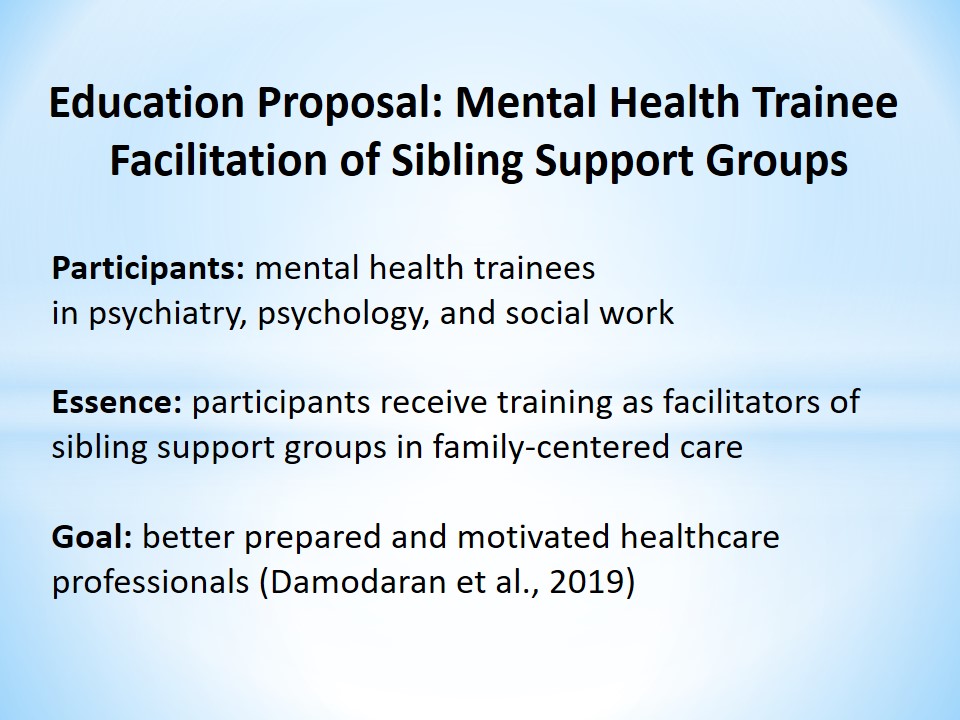
Connection to Evidence-Based Approaches
The proposal is firmly based on the evidence-based approaches listed above. The program of facilitating sibling support groups for adolescents with mental health problems would naturally fit as a module in the education of mental health professionals. As a consequence, it corresponds perfectly to the modular training, which is, in turn, an extension of the developmentally sensitive training and supervision. As mentioned above, the proposal encompasses mental health trainees from the fields of psychiatry, psychology, and social work alike. This would bring the individuals with different perspectives on adolescent mental health and, by extension, facilitate the building of interdisciplinary teams. As mentioned above, such teams are a natural manifestation of such an evidence-based approach as collaborative design.

Results for Family-Based Care
- Better skills in family-centered care (Damodaran et al., 2019).
- Greater confidence in family-centered care (Damodaran et al., 2019).
- Stronger intention to practice family-centered care (Damodaran et al., 2019).
Apart from being rooted in evidence-based approaches and the practices that arise from them, the proposal is also beneficial for promoting family-based care for adolescents with mental health problems. Existing research suggests that the trainees who underwent a similar program, albeit with no emphasis on adolescent mental health specifically, demonstrate better skills in family-centered care. Apart from the objective increase in skills, they also showed greater subjective confidence as family-based care practitioners. Finally, the trainees who underwent the program expressed greater intention to practice family-centered care in their future careers as compared to their counterparts who did not. Thus, the benefits of the proposal for promoting family-based care for adolescents with mental health problems is evident.
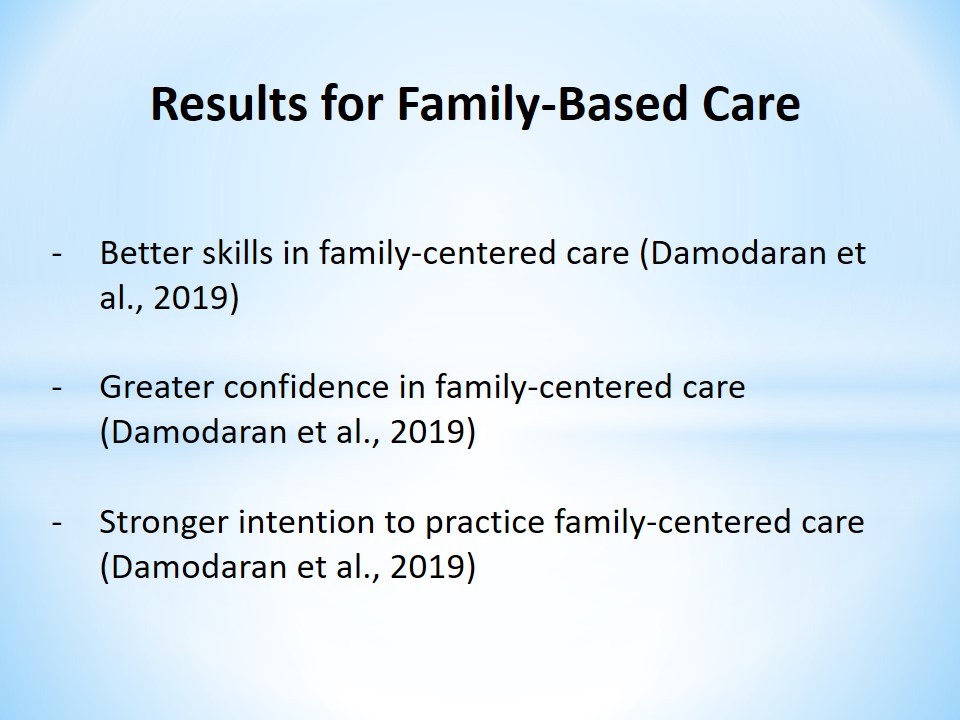
Interdisciplinary Health Professional: Registered Nurse
- Role: provide education and counseling, refer patients to other healthcare practitioners.
- Significance: influence the patient’s first steps after contacting the healthcare system.
One type of interdisciplinary health professionals that could benefit from such a proposal is, obviously enough, registered nurses or RNs. Their role is multifold, and, among other things, they are responsible for providing education and counseling as well as referring patients to other healthcare practitioners. Doing so efficiently when encountering a problem related to adolescent mental health requires thorough knowledge and understanding of evidence-based practices used to address such issues in different youth groups. Since RNs often influence the patient’s first steps after contacting the healthcare system, their competence and qualification potentially impact the entire course of the following treatment. Therefore, RNs are essential for promoting mental health among adolescents, and greater awareness of adolescent mental health problems is sure to benefit them as interdisciplinary health professionals.
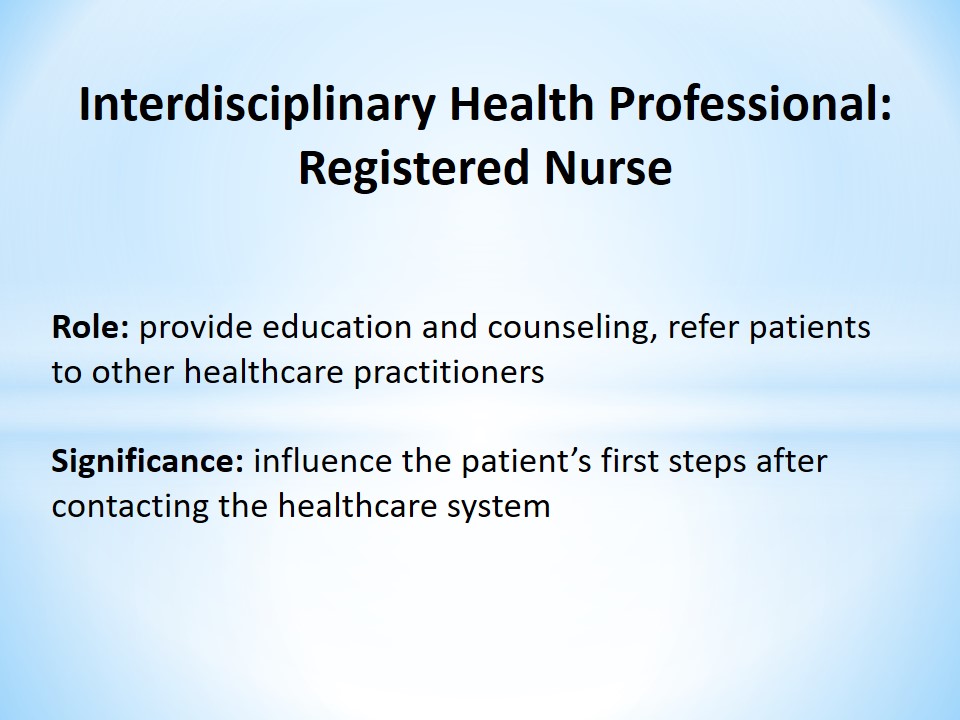
Interdisciplinary Health Professional: Social Worker
- Role: provide qualified assistance for groups and individuals facing specific issues.
- Significance: ensure effective labor division.
Another group of interdisciplinary health professionals that could improve their competency by facilitating sibling support groups for adolescents with mental health issues is social workers. Unlike registered nurses, who need a broad competency to perform their functions with the utmost efficiency, social workers concentrate on providing qualified assistance for groups and individuals facing specific issues. The significance of social workers as interdisciplinary health professionals lies in the fact that their efforts allow a more efficient labor division in an institution by relieving other professionals from the duties they would have to perform otherwise. Thus, proper training is essential for social workers, including those helping youths with mental health, and this proposal is likely to leave trainees better prepared to address corresponding issues and promote mental health among adolescents.
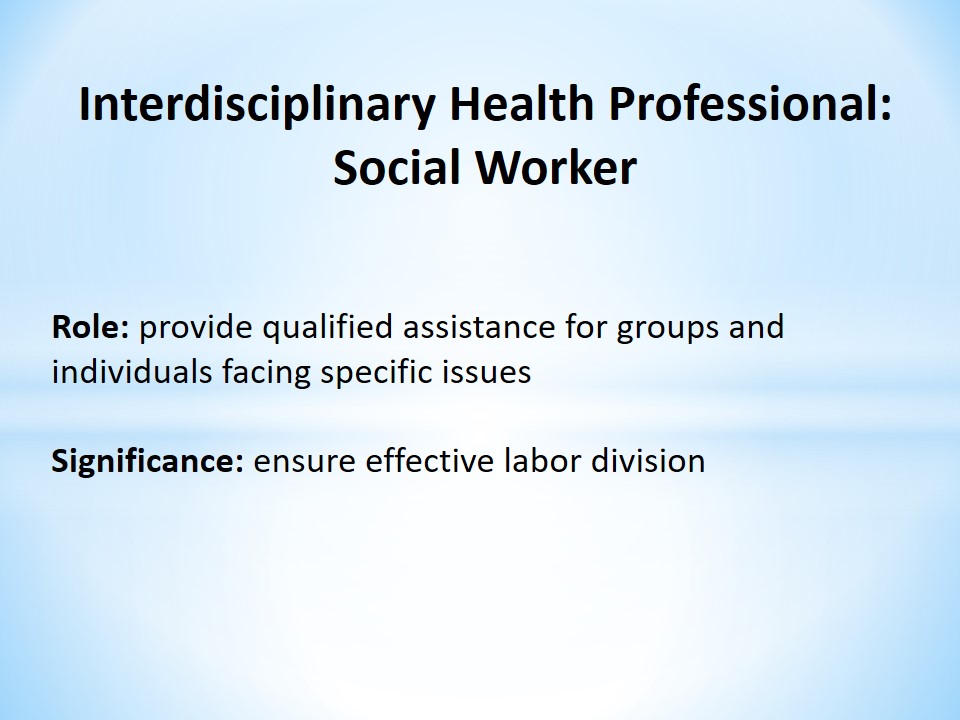
Resource #1 (national): American Academy of Pediatrics
- Guidance on screening for behavioral and emotional problems (Weitzman & Wegner, 2015).
- Specific emphasis on adolescent mental health (Weitzman & Wegner, 2015).
When addressing the issues related to adolescent mental health, a health professional may rely on a number of national resources. One such resource is the American Academy of Pediatrics or, more specifically, its guidelines for screening children and adolescents for behavioral and emotional problems. The obvious advantage of this resource is its focus on children and adolescents and practices that help a health professional to address mental health issues among the youths specifically. Since most mental disorders originate in adolescence, screening for behavioral and emotional problems in this age acquires twofold importance. Proper detection does not merely improve the outcomes for adolescents, but potentially lowers the rates of mental disorders later in life, and the guideline from the American Academy of Pediatrics is a useful resource for that.
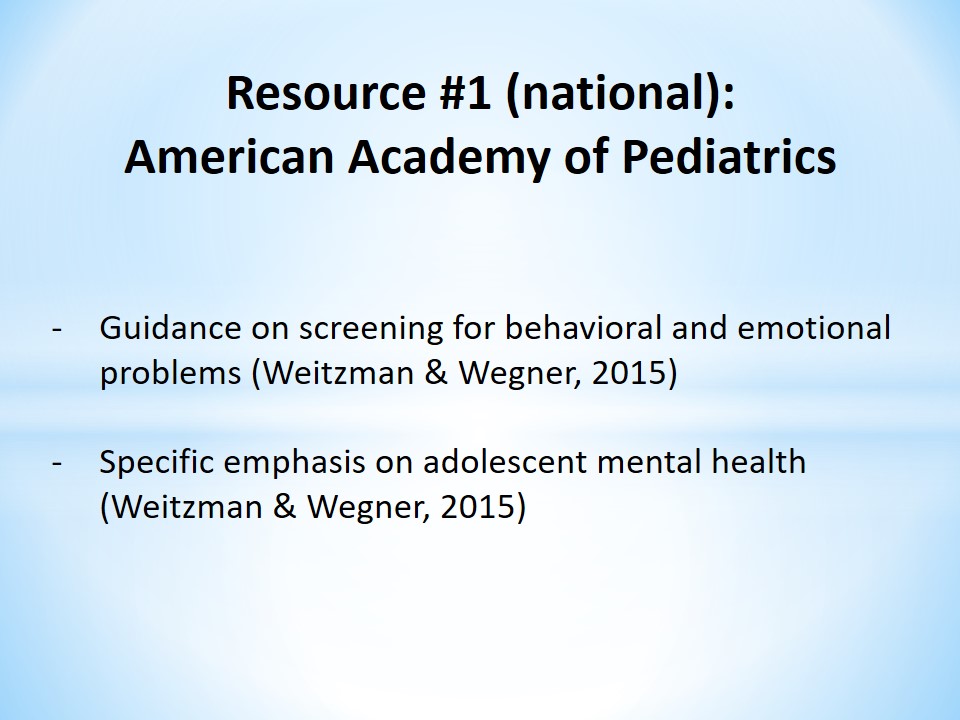
Resource #2 (national): National Institute of Mental Health
- Wide array of materials on mental health disorders (National Institute of Mental Health, n.d.).
- Broad range of mental health disorders covered (National Institute of Mental Health, n.d.).
Another resource that can be utilized by a patient to promote adolescent mental health is the National Institute of Mental Health. It is one of the leading medical institutions studying mental health issues, including those faced by the youth, in the United States. The National Institute of Mental Health offers a wide array of materials useful for a patient. The range of the mental disorders covered in these materials is correspondingly broad and provides a wealth of relevant and up-to-date information. More importantly still, the materials cover their respective issues in a user-friendly style and are accessible through the Internet, making them a suitable option for adolescent patients.
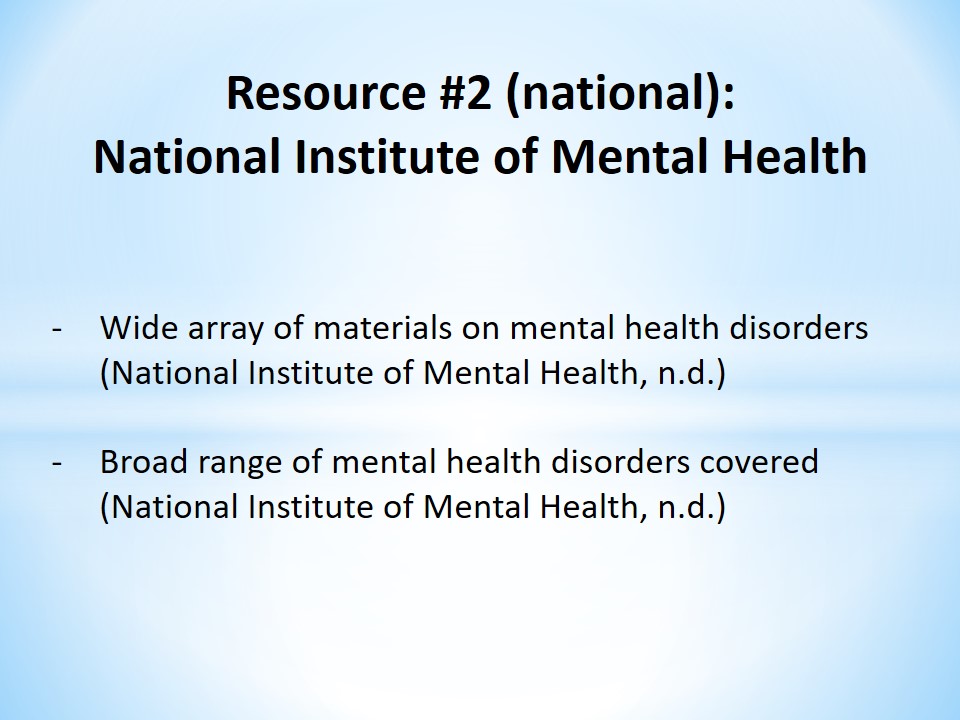
References
Damodaran, S., Huttlin, E., Lauer, E., & Rubin, E. (2019). Mental health trainee facilitation of sibling support groups: Understanding its influence on views and skills of family-centered care. Academic Psychiatry. Web.
Durwood. L., McLaughlin, K. A., & Olson, K. R. (2017). Mental health and self-worth in socially-transitioned transgender youth. Journal of the American Academy of Child & Adolescent Psychiatry, 56(2) 116-123.
Gunnell, D., Kidger, J., & Elvidge, H. (2018). The adolescent mental health in crisis. British Medical Journal, 361. Web.
López, C. M., Andrews, A. R., III, Chisolm, A. M., de Arellano, M. A., Saunders, B., & Kilpatrick, D. G. (2017). Racial/ethnic differences in trauma exposure and mental health disorders in adolescents. Cultural Diversity and Ethnic Minority Psychology, 23(3), 382-387.
National Institute of Mental Health. (N.d). Brochures and factsheets. Web.
Raifman, J., Charlton, B. M., Arrington-Sanders, R., Chan, P. A., Rusley, J., Mayer, K. H., Stein, M. D., Austin, S. B., & McConnell, M. (2020). Sexual orientation nand suicide attempts among US adolescents: 2009-2017.Pediatrics, e20191658. Web.
Rith-Najarian, L. R., Daleiden, E. L., Chorpita, B. F. (2016). Evidence-based decision making in youth mental health prevention. American Journal of Preventive Medicine, 51(4s2), s132-s139.
Weitzman, C., & Wegner, L. (2015). Promoting optimal development: Screening for behavioral and emotional problems. Pediatrics, 135(2), 384-95.
World Health Organization (2017). Global Accelerated Action for the Health of Adolescents (AA-HA!). World Health Organization.